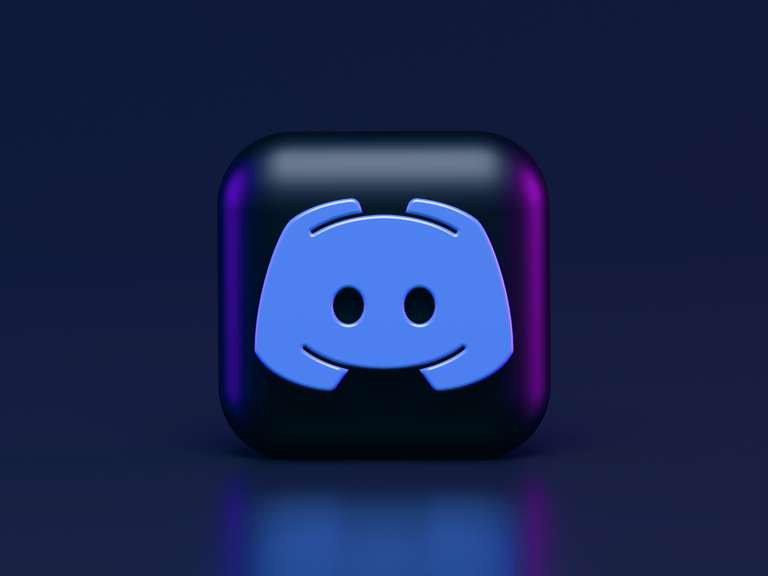8 Essential Features Every Good Text to Speech Software Must Have

Today's text to speech technology is miles away from what you may have heard a few years ago. From sounding robotic and monotonous to natural and human-like, TTS has advanced and become more sophisticated, enabling several new capabilities that many previously considered unimaginable.
In addition to making information accessible to all, text to speech extends the reach of content, enhances customer experience, saves time and money spent on creating voiceovers manually, and enables the creation of content at scale. A number of industries, in fact, believe that it is bound to take the world by storm and have started introducing text to speech solutions into their workflow.
But before we dwell into the depths of what TTS can do for different businesses, let's take a closer look at the elements that make a good and effective text to speech software.

1. Natural sounding voices
The primary aspect that differentiates any text to speech software is its human-parity voices. What makes human voices so human is its expressiveness, inconsistency, and ability to deliver the same lines in entirely different styles, depending on the context.
A text to speech software should deliver high-quality AI voices that can replicate the likeliness, style, natural prosody, and uniqueness of human speech. Through contextual awareness, the AI voice should be able to pause and breathe in all the right places and change the style or emotion. There should be a bevy of options for both female and male voices, making it easy for users to customize their voiceover experience.
2. Simple and easy-to-use interface
A good text to speech tool should have an interface that is easy for the user to navigate, with little to no training. With just a click of a few buttons, users must be able to translate text into lifelike speech and create compelling realistic voiceovers for their projects.
In other words, the software should be user-friendly, with limited menu options, including a simple toolbar and a control panel with precise keys and functions, enabling the user to move around and explore the different software modules available without any hindrances.
3. Collaboration
A notable aspect of any browser-based text to speech software is team collaboration. Different team members should be able to view and edit files, work simultaneously on the same content, and share inputs, enabling true real-time collaboration.
Being able to work on the same audio file at the same time is critical to true collaboration because, without it, working as a team on a big project can be cumbersome and slow. Collaboration not only saves countless hours that would otherwise be wasted but being able to work together in real-time helps us get past thorny challenges quickly and accelerate projects.
4. Import and export files and media
Another essential feature of any intuitive text to speech software is the ability to seamlessly import and export files in multiple formats. Importing and exporting files is a key part of working with digital information. The TTS software should allow users to either copy-paste text to an editor or import text files in different formats to the software. At the same time, there should be an option to export the final audio file in various formats.
An added advantage would be allowing users to add media files such as images, videos, and presentations to the final voiceover and sync them to create the perfect voice over content.
5. Support different languages and accents
When it comes to the core functionalities of a text to speech software, the ability to convert content in different languages and accents tops the list. A great TTS tool must offer users the ability to transform their content into multiple languages and accents, thereby broadening the reach of the content worldwide and helping overcome language barriers. This will also unlock tremendous potential for business growth as customers with a global footprint can create a consistent user experience across languages and regions.
Having a multilingual TTS system also means businesses don't have to spend large sums of money hiring voice artists to record multilingual versions of their audio or video content. Text to speech tools can easily convert scripts into natural sounding speech, helping businesses create content at scale.
6. Customization features
AI voices built with advanced TTS technology can improve the naturalness, intelligibility, comprehensibility, and intonation of a voiceover. A voice without customization is just another voice. As such, any good text to speech software should enable users to tweak the voiceover of their project specific to use cases.
The tone of voice varies with each project and character. While some would require a low-pitched voice that delivers the right balance of intelligence, authority, and clarity, others would need a peppy and exciting voice. This is where voice customization features play their part in helping a user achieve the perfect custom voiceover, depending on their project.
7. Change speech quality to professional
Using traditional methods to create multiple audio versions of your content is cumbersome and expensive. You'll have to rehire voiceover artists, rent a studio, and audio specialists every time you need to update content. Having a voice changer feature in your TTS changes all of that.
TTS with a voice changer helps you not only improve the voice quality of your home recordings to professional voiceovers but also enables you to change the gender, language, and accent of your voiceover, among other things.
8. Voice cloning
AI-based voice cloning eases the burden of recording audio multiple times or re-taking due to errors. A text to speech system with voice cloning capabilities can significantly transform every industry, including eLearning, advertising, customer service, and so on, by enabling creators to create a unified brand audio identity. It can save time or budget that these brands spend to schedule multiple voice actors, recording studios, re-takes, and post-production. With voice cloning, companies can create their own custom voice and center their brand image around it, and create content at scale.
What makes Murf the Best Text to Speech Software?
Murf checks all of the boxes in the list of facets that make a best text to speech software with accurate voice generation. Murf's intuitive user interface makes it simple and easy to convert text files to audio files that one can listen to anywhere. Not only are Murf's natural voices 100 percent realistic, but they also support voice customization options like pitch, speed variation, pause, and emphasis addition.
In addition, users can change the pronunciations of words with Murf text to speech. Murf provides users with a wide range of 120+ AI voices across 20+ languages spanning different accents, tonalities, styles, and emotions. From friendly to conversational to authoritative to casual; happy to angry to sad to excited; and from various languages like Spanish, Japanese to various accents of the same language from British accent generator and australian accent generator, Murf has versatile voices for every use case.
Users can import and export various file formats on Murf. Murf allows you to either upload their script as a word document in DOCX, TXT, and SRT formats on Murf or simply copy-paste the content to its text editor. Similarly, users can download the final voiceover in multiple file formats, including MP3, FLAC, and WAV for audio and MP4 and MOV for video.
The software goes beyond simply converting text to speech to work as a video maker, enabling content creators and businesses alike to add images, videos, and presentations and sync them with the voiceover to create perfectly-timed, engaging voice over videos. Murf has a library of royalty-free background music that users can choose from and add to their voiceovers.
A notable aspect of Murf is its ability to support real-time team collaboration. Murf enables businesses to bring all of their teams' projects in one place and work in a more unified way, ultimately creating quality videos and presentations on a large scale for various industries. This also serves as a neat way to manage multiple files. Projects in the 'Home Directory' on Murf will become accessible to all team members. However, the projects in folders will remain inaccessible until the project admin explicitly grants access.
Furthermore, Murf also supports the ability for users to create custom voice clones of their favorite celebrities or actors as well as change the quality of their home-recorded voiceover to a studio-quality voiceover with zero noise using its voice changer feature. Above all, Murf sports an API that lets users easily integrate speech synthesis capabilities into webpages, ebooks, articles, applications and other software.

Final thoughts
In conclusion, choosing the right text to speech tool for your voiceover needs involves comparing multiple applications and looking at the benefits and drawbacks of each. However, more importantly, if the software has all the aforementioned powerful features to create voice overs, be certain that you have found the correct text to speech partner!
FAQs
What is text to speech technology?
Text to speech technology transforms written text into natural-sounding audible speech. It works by processing input text through algorithms and synthesizing it into audible speech output. The technology has numerous applications, such as audiobooks, podcasts, voiceovers for e-learning materials, and serves to improve engagement and immersion. Text to speech also serves as a valuable tool to improve accessibility for individuals with visual impairments.
What are the key features of a good TTS system?
A good text to speech software has several crucial traits that enhance its functionality and usability across diverse industries and applications. These features include natural-sounding voices, a user-friendly interface, collaboration capabilities, import and export functionality, multilingual support, customization options, professional, studio-like speech quality, and voice cloning to create custom voices.
How important is voice quality in a text to speech software?
Voice quality is crucial in text to speech software as it directly influences the user engagement and experience levels. A high-quality voice that sounds natural, expressive, and pleasant to listen to has the greatest impact. Users are more likely to engage with content delivered in a real, authentic voice, leading to improved comprehension. Additionally, voice quality plays a crucial role in conveying emotions in the spoken text, making the communication more immersive.
Can TTS software handle different languages and accents?
Yes, advanced text to speech online software is competent in handling different languages and accents. These TTS systems are perfectly designed to convert text into speech in various languages and typically offer multiple voices with unique accents for each language. Murf Studio, for example, gives access to a series of 120+ male and female natural AI voices across 20+ languages allowing you to produce engaging voiceovers.
How does a good text to audio system handle pauses and intonations in speech?
A good text to audio system develops contextual awareness by being trained on a dataset of voices to pick up on the imperfections, inconsistencies, and pauses in human speech that give it a natural rhythm. Advanced algorithms, neural networks, and deep learning techniques help the system replicate these patterns in synthesized audio, which leads to natural-sounding speech. The system also takes cues from the input text and factors punctuation marks, sentence structures, and contextual information to determine appropriate pauses, stress patterns, and intonations that mimic natural speech. Additional options to customize pauses or intonations are also provided by some tools.
Can text to speech online read different types of content, such as books, articles, and websites?
Yes, online text to speech free systems can read different types of content, ranging from books and articles to sites and various text files. Text to speech software can handle multiple formats of text files, including PDFs, Word documents, Pages documents, plain text files, web pages, and more.
Are there text to speech generators that offer real-time translation capabilities?
Yes, there are text to speech generators that offer real time translation traits and Murf Studio is one of the notable platforms in this category. Murf provides real-time translation features to immediately translate and convert your text into 20+ languages. Murf's capabilities are beneficial for various apps, such as creating multilingual audio content and enhancing accessibility for international audiences.
What are the fundamentals of text to speech?
The fundamentals of text to speech include text analysis, linguistic processing, voice synthesis, and prosody modeling. Initially, the tool analyzes the input text file, identifying components like punctuation, sentence structure, and speech cues. Language analysis algorithms interpret the text, determining pronunciation and intonation based on linguistic rules and context. Voice synthesis engines then generate speech output using digital signal processing techniques, blending phonemes and sound units to create human-like voices. Finally, elements like rhythm, stress, pitch variations, and pauses enhance the naturalness and expressiveness of the synthesized speech.
What are the limitations of text to speech software?
Text to speech software currently may struggle with reading information in the form of tables, charts, or infographics, even though some tools do support conversion from images. Additionally, it may not capture certain nuances effectively, for example, the pronunciation of culture-specific names or words. Tools that offer users a host of customization options aim to bridge these gaps.



